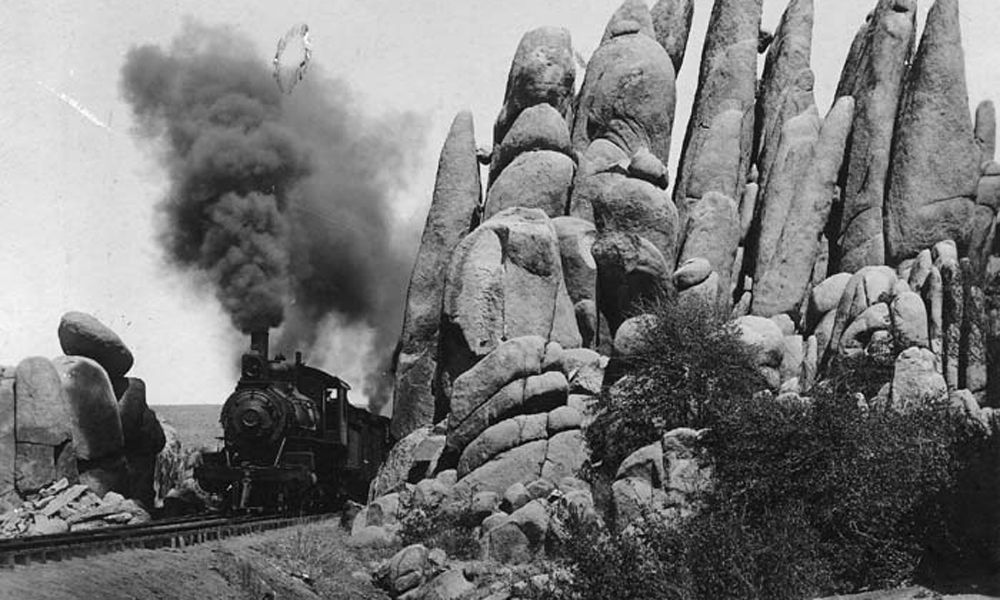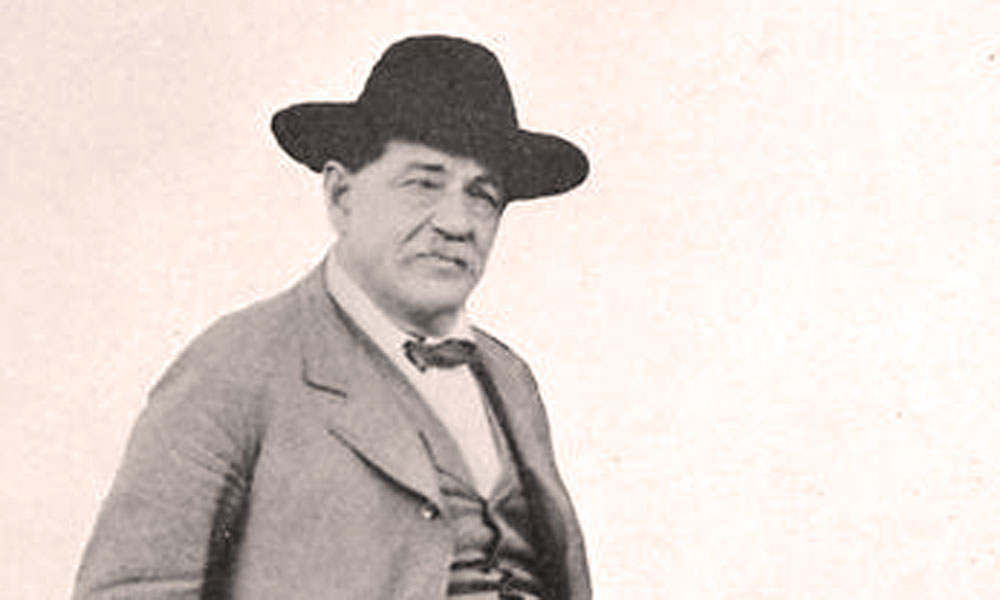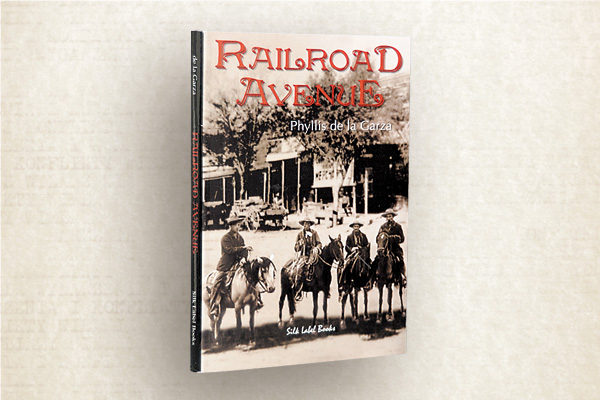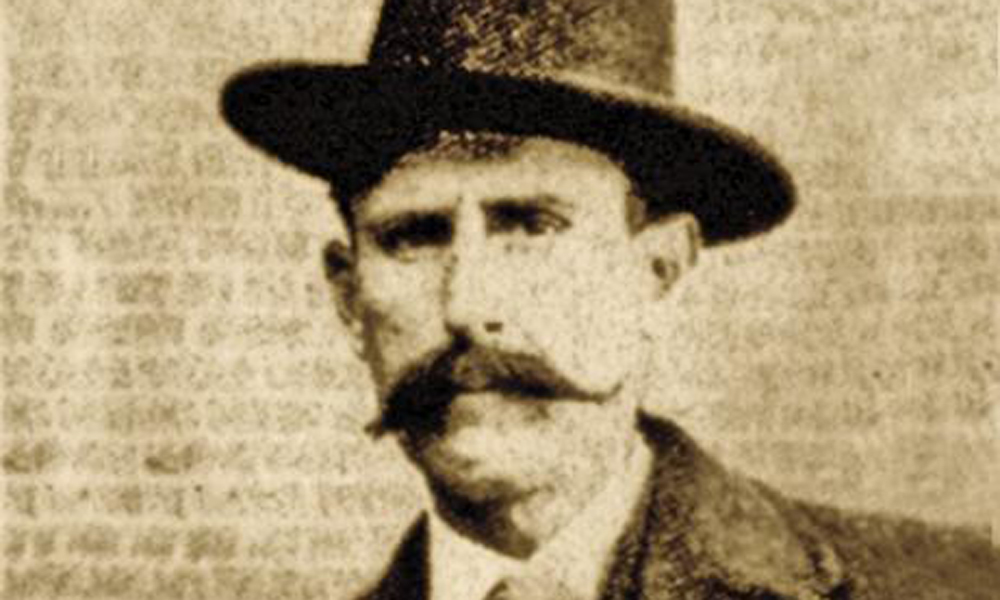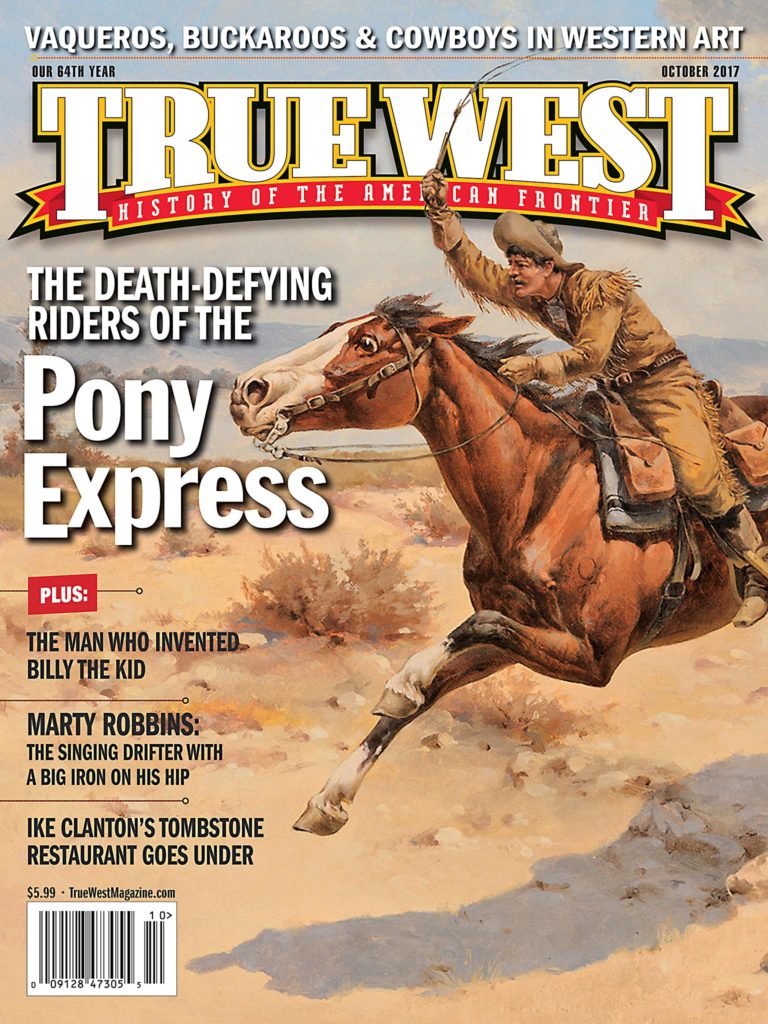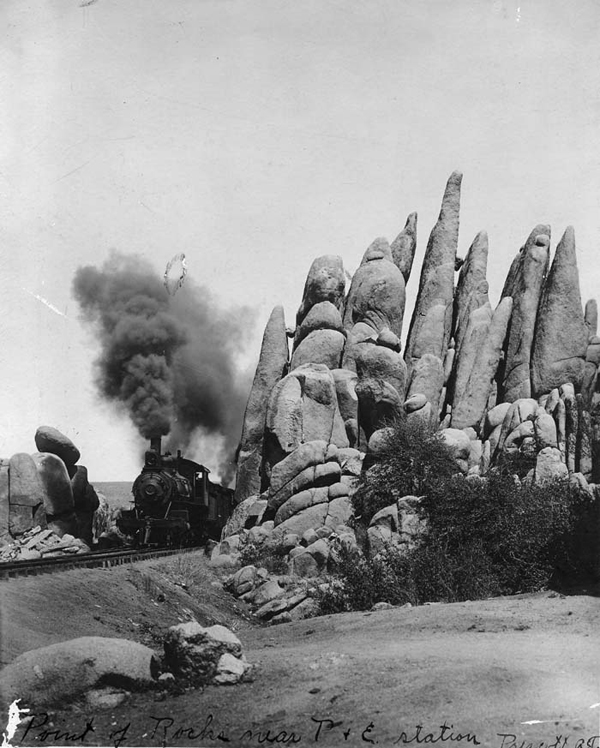
Tom Bullock was a gregarious, smooth-talking promoter. He’d been a bartender Prescott’s Whiskey Row before heading to New York where he made a fortune building street railways. Ever since the Atlantic and Pacific Railroad (the Santa Fe Railroad) transcontinental railroad crossed northern Arizona in 1883 the company had wanted to build a branch line south to the rich copper mines of Jerome. With the advent of the age of electricity, copper was in great demand and the mountains of Arizona had an abundance of the red metal. Several rail companies were interested but it came down to just two.
Bullock organized a group of investors known as the New York Syndicate. They proposed building a narrow-gauge railroad branch line to Jerome. A narrow gauge line, the tracks were only 3′ to 3’6″ wide, would be much cheaper. Meanwhile another entrepreneur named Frank Murphy was organizing a similar group in Minneapolis. Murphy’s syndicate wanted to build a branch line to Prescott and eventually to Phoenix. Murphy’s syndicate believed the branch line to Jerome wouldn’t be able to muster enough public support but one to the territorial capital at Prescott and eventually to the fast-growing city of Phoenix would. More importantly to Murphy’s group; they owned a rich gold mine at Congress and the line to Phoenix would go past Congress. Also, Murphy wanted to build a standard gauge line (the rails were 4’8″ wide,) same as the mainline railroads. He knew a narrow gauge line would require costly time-consuming efforts to transfer materials and freight to the standard gauge mainline railroad. Their proposal also called for no branch line to Jerome. On May 10th, 1885 the Central Arizona Railway Company was organized in Prescott. The bitter feud that became known as the “Battle of Prescott” was about to begin.
The Santa Fe Railroad wanted the branch line built but they wanted solid support from the citizenry. They offered to throw their support to Bullock if he’d stop the bickering and work with the other side. On July 16th, 1885 the two groups agreed to consolidate and re-organize the board of directors. Despite this there was considerable infighting over who was going to be in charge. In the end Bullock emerged the victor. However, Murphy’s group won two major concessions. The rails would be standard gauge and if or when the line was extended to Phoenix it would follow the Hassayampa River route through Congress rather than the more direct one through Black Canyon where Interstate 17 runs today.
Meanwhile Prescottonians raised $300,000 to bring the railroad to their city. The seventy-two-mile branch would connect at Prescott Junction, today’s Seligman and run south through Big Chino Wash to Prescott. The contract stipulated that Bullock’s railroad would reach Prescott by midnight on December 31st, 1886 or face a stiff $1,000 a mile penalty. In other words meet the deadline of be fined seventy-two thousand dollars.
Construction went smoothly until the shady ladies arrived and the tent saloons materialized in the construction camps. On newspaper reporter noted, “I saw an entire freight train of 30 cars laden with bottled beer….bound for the nearest end of track.” Prescott’s society of gamblers laid the odds at 10 to 1 Bullock wouldn’t meet the deadline. Some of the rounders tried to hedge their bets by sabotaging the railroad line. Cattlemen, angry over the railroad right of way across their grazing lands, had their cowboys stampede cattle through a construction site. Some cowboys tried blowing up a caboose while another group of vandals tried to wreck a train by removing a rail. Their plot was foiled when the engine ran aground before hit the damaged section. Another scheme failed when a cloudburst hit and extinguished the flames of a trestle that had been set afire.
The odds against meeting the deadline rose to twenty to one. Still, the track layers and Gandy dancers trudged on towards Prescott.
On December 30th, 1886 the line reached Granite Dells, then known as Point of Rocks and by the evening of December 31st they were two miles from Prescott. Lanterns were lighted as the railroad workers kept tying ’em in and laying ’em down. The gandy dancers bounced on their shovel handles to lift the rails so ballast could be shoveled beneath. Then they tamped them down. Citizens who had bet against the odds shouted encouragement from the sidelines while others joined in to help. With just five minutes to go hundreds cheered as Governor Conrad Zulick drove a gilded spike into a tie painted red, white and blue.
The little16-ton steam engine, the Hassayampa rolled ceremoniously into town. Prescott was at last linked to the outside world by rail.
The operation of the Arizona Central Railroad was a textbook story of inefficiency. The entire line consisted of two small locomotives, four box cars and one passenger car, all second hand.
For the first few months Prescott had no turntable so the two steam engines, the Hassayampa and the F. A. Tritle had to make the return trip to Prescott Junction in reverse. Fare on the Central Arizona Railway was and affordable ten cents a mile so a ticket to the Santa Fe mainline at Prescott Junction cost seven dollars and twenty cents but one could make a better deal by dealing with the conductor. The schedule was flexible too. At Banghart (Del Rio) the crew would pause for a beer and a crap game with the section crew. The train also paused frequently in the woods along Big Chino Wash so the crew and passengers could go deer hunting.
Since the line was built in Big Chino Wash there was frequent flooding especially during the summer monsoon. After a heavy rain the tracks collapsed, tossing the little engines into a mud hole. The tracks were often washed out. After one storm the Hassayampa lay on its side in the mud for three weeks before a team of mules could get it upright. Locals began calling the Bullocks line, the “Mudball Express.”
By 1891 the Central Arizona Railroad was in trouble. Ties were rotting, trestles were in need of repair and the tracks were often washed out. The big flood in 1892 was the final blow. The railroad was broke.
Meanwhile a king’s ransom in gold, silver and copper lay buried in the Bradshaw Mountains near Prescott and on Cleopatra Hill where the town of Jerome clung precariously to its steep slopes.

